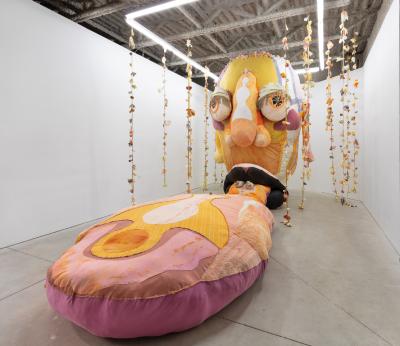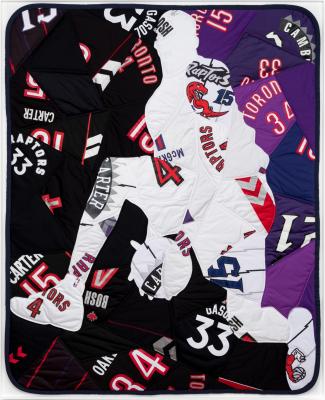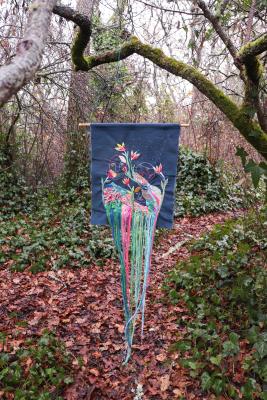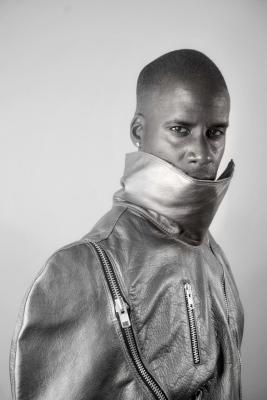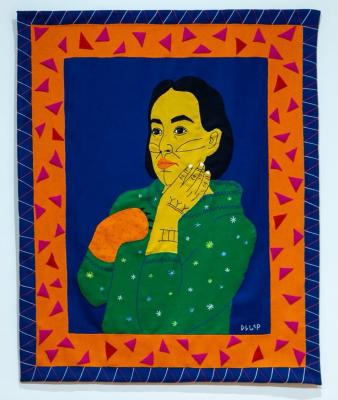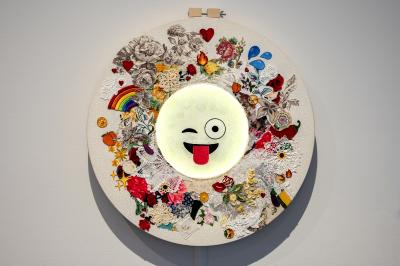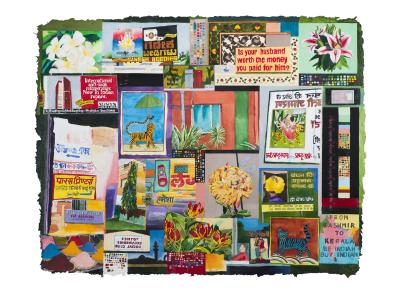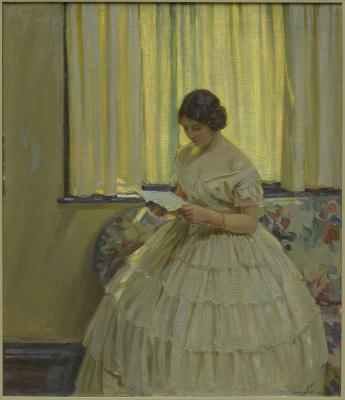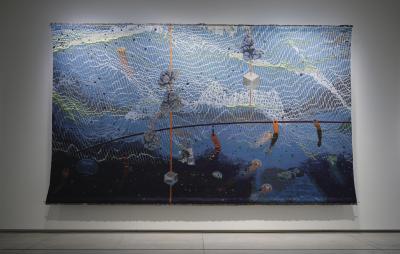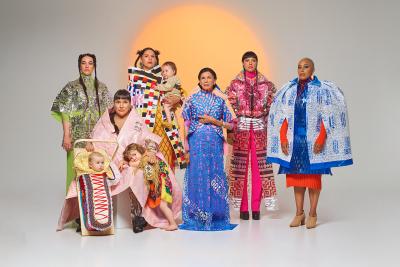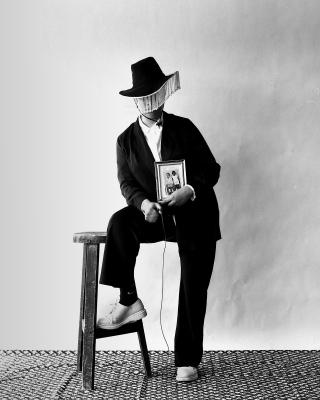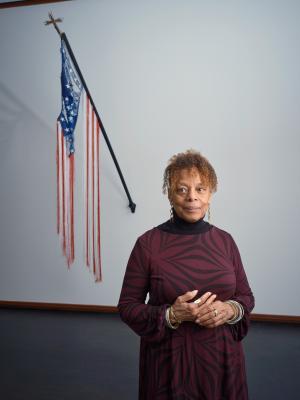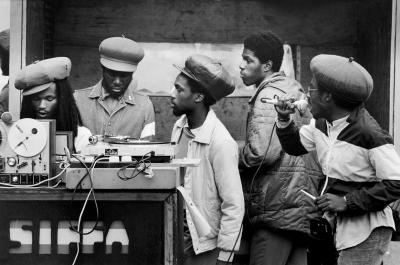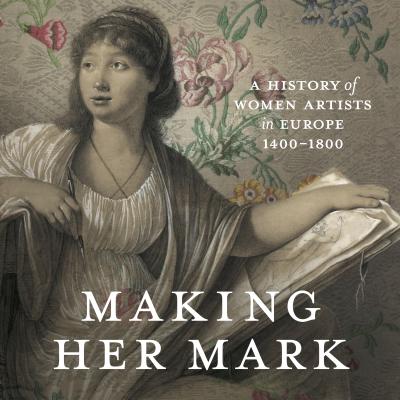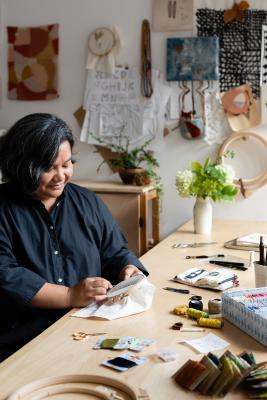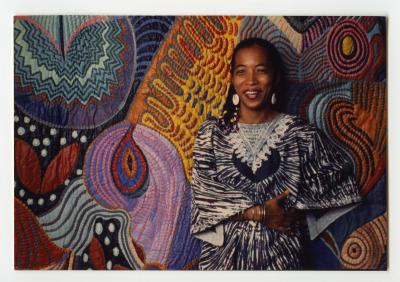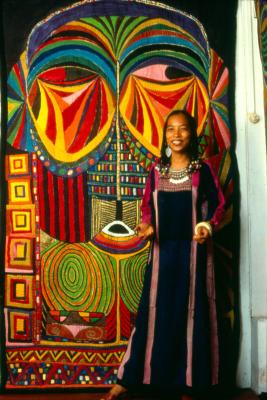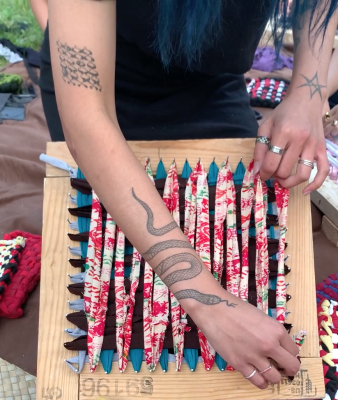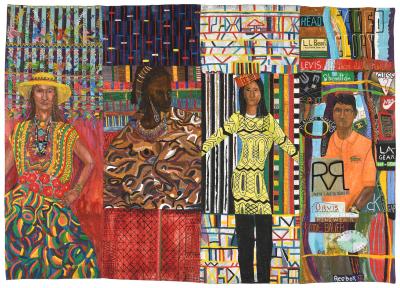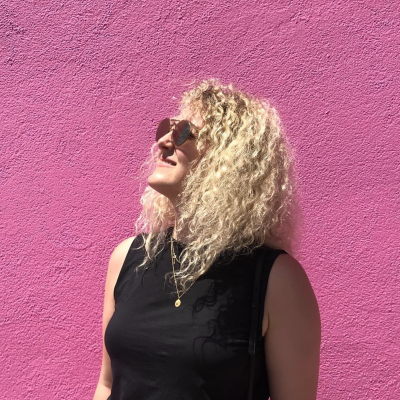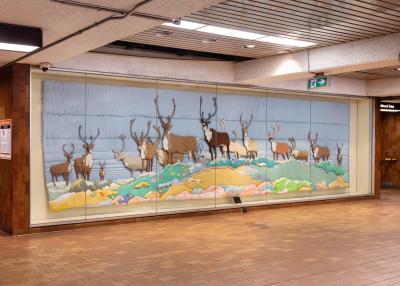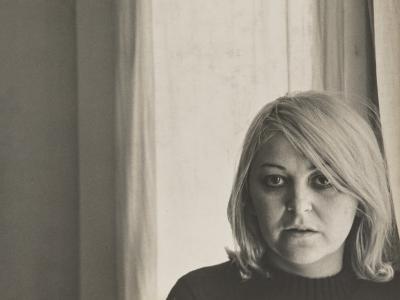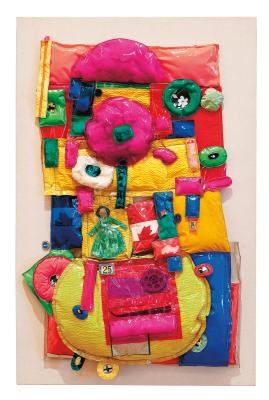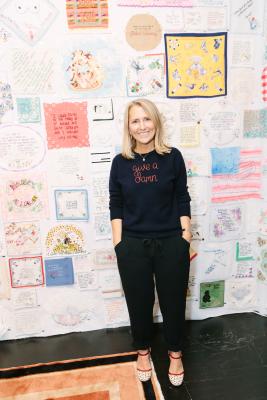Diana Weymar on the Power of Tiny Pricks
The textile artist discusses crafting as a source of power and comfort ahead of her talk on November 22
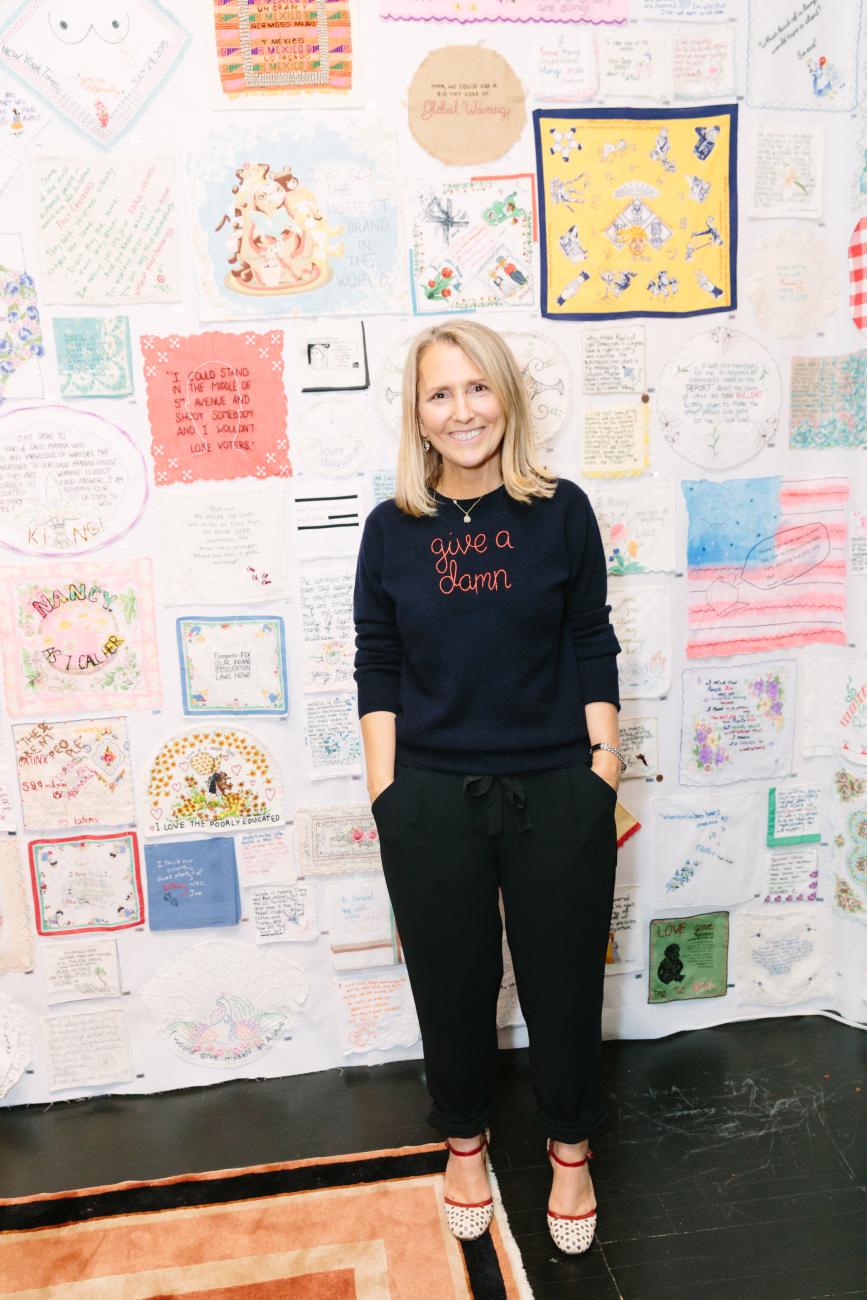
Diana Weymar. Photo by Yvonne.
“I am a very stable genius,” US President Donald Trump concluded on a 2018 X thread (then known as Twitter) responding to the publishing of Fire and Fury, an exposé on the President written by journalist Michael Wolff.
This tweet became immortalized materially when textile artist and activist Diana Weymar decided to embroider it onto her grandmother’s old needlework cushion cover. After posting the work online and gaining traction, Weymar became the creator and curator of Tiny Pricks Project, a public art project that stitches Trump’s words, current political discourse, and cultural references onto textiles to create a material record of his presidency. Much of Weymar’s work, including Tiny Pricks Project, contrasts the impermanence of social media platforms like X, while highlighting the warmth and history of textile art.
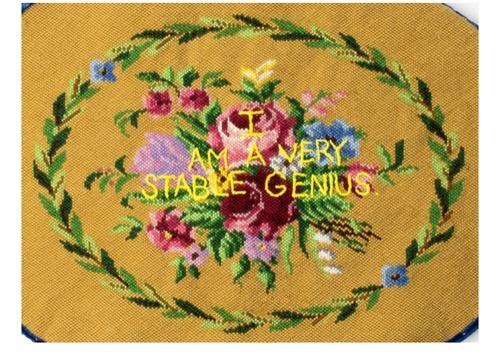
Photography by Nelson Hancock, images from Crafting A Better World: Inspiration and DIY Projects for Craftivists (HarperCollins) by Diana Weymar.
Beyond Trump, Weymar’s work depicts quotes from various figures, including author Toni Morrison, journalist Molly Jong-Fast, and writer Suleika Jaouad, among many more. Through her work, Weymar invites viewers to consider current political discourse and take creative action. Recently, HarperCollins published Weymar’s book Crafting a Better World: Inspiration and DIY Projects for Craftivists, which focuses on cultivating a creative outlet during troubling times.
Joyce Wieland (1930-1998) used textiles as a vehicle for political activism, with many of these works currently on view at the AGO as part of the exhibition Joyce Wieland: Heart On. From Barren Ground Caribou (1977-1978), which comments on the ecological preservation of the Arctic, to Reason over Passion (1968), which also records the words of a political leader through textiles – this time, former Canadian Prime Minister Pierre Trudeau – Wieland’s bright, pillowy textile works address serious political concerns.
On Saturday, November 22, Weymar will be in conversation with Heart On curators Georgiana Uhlyarik, the AGO’s Fredrik S. Eaton Curator of Canadian Art, and Anne Grace, the Montreal Museum of Fine Art’s (MMFA) Curator of Modern Art, for Common Threads: A Modern Stitching Circle. While Weymar, Uhlyarik, and Grace discuss feminist practices through materiality and content, makers are encouraged to bring their stitching projects to work on while listening. Weymar will also have a selection of works on view for the duration of the talk.
Learn more about Weymar’s background in textile art and her perspective on the intersection of textiles and politics.
Foyer: To start, can you tell us a bit about your background working with textiles?
Weymar: Over a decade ago, a confluence of events inspired me to work with textiles, text, and social media to address current political discourse. My maternal grandparents had died, leaving behind boxes of "memory textiles” that my mother almost immediately passed on to me. They were too beautiful, delicate, and poignant to throw out, but I also couldn’t imagine a practical use for them. I started to use them in my art projects as I was interested in art therapy and the concept of creating art in community settings as a way to collectively process experiences. If I had extra textiles to repurpose, certainly other people would too. It was important to me to remove barriers to participation in my two community projects: Tiny Pricks Project and Interwoven Stories. Textiles that have clearly been loved, collected, and preserved can evoke feelings of nostalgia, belonging, and yearning. I found social media to be the perfect way to display my textile work quickly and effectively. The juxtaposition of something old and something new can give us pause and help us reflect on where we are, where we have been, and where we are going.
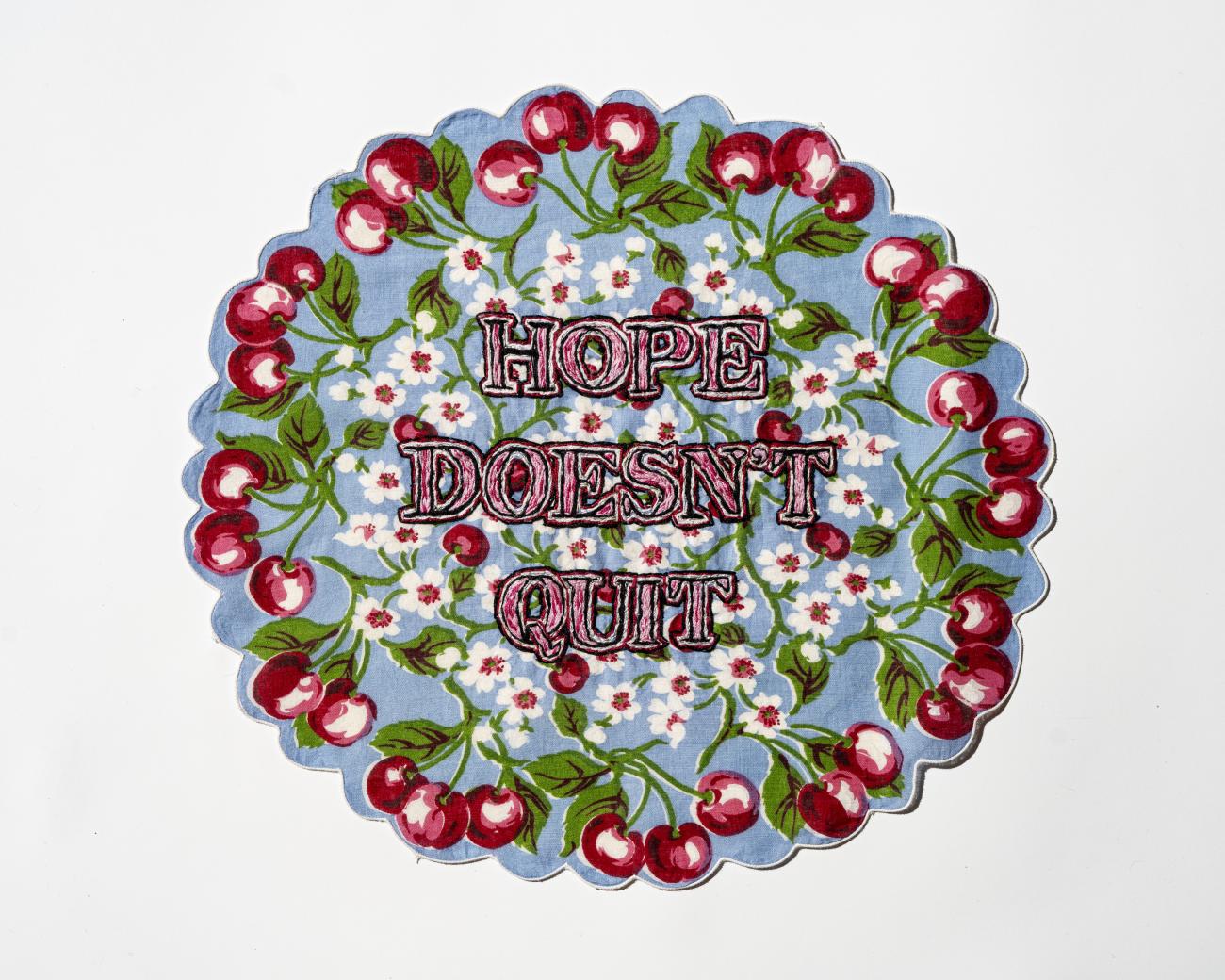
Photography by Nelson Hancock, images from Crafting A Better World: Inspiration and DIY Projects for Craftivists (HarperCollins) by Diana Weymar.
Tiny Pricks Project started when you stitched that quote from Donald Trump onto an old needlepoint cushion work by your grandmother. What led you to create this initial work, and can you tell us a bit about how the project has grown since that fateful day in 2018?
The cushion cover was kicking around in my studio. The colors were loud, and the pattern was unappealing to me, but I could not throw it out because so much handwork had been put into it (I also find Trump very unappealing). However, the act of upcycling the textile by making it into a piece of protest art was very appealing. Art can come out of discomfort, but it can also offer a way to transition to a more comfortable place. I stitched it, took a photo, and posted it on Instagram. Though I only had 500 followers at the time, it was clear to me that this was a thing – that it felt right. I didn’t expect Trump to stay in office very long, so committing to stitching as many of his insane comments as I could seemed to be a safe concept for a short period of time. Who could have guessed that he would play such a significant role in political discourse for so long? When I started stitching in 2018, I could not keep up with all the quotes! I was relieved when others offered help by stitching pieces of their own. By the summer of 2019, the physical collection of stitched quotes had grown to over 1,500 pieces, I had over 10,000 followers and a show in NYC. The rest, as they say, is (stitched) history.
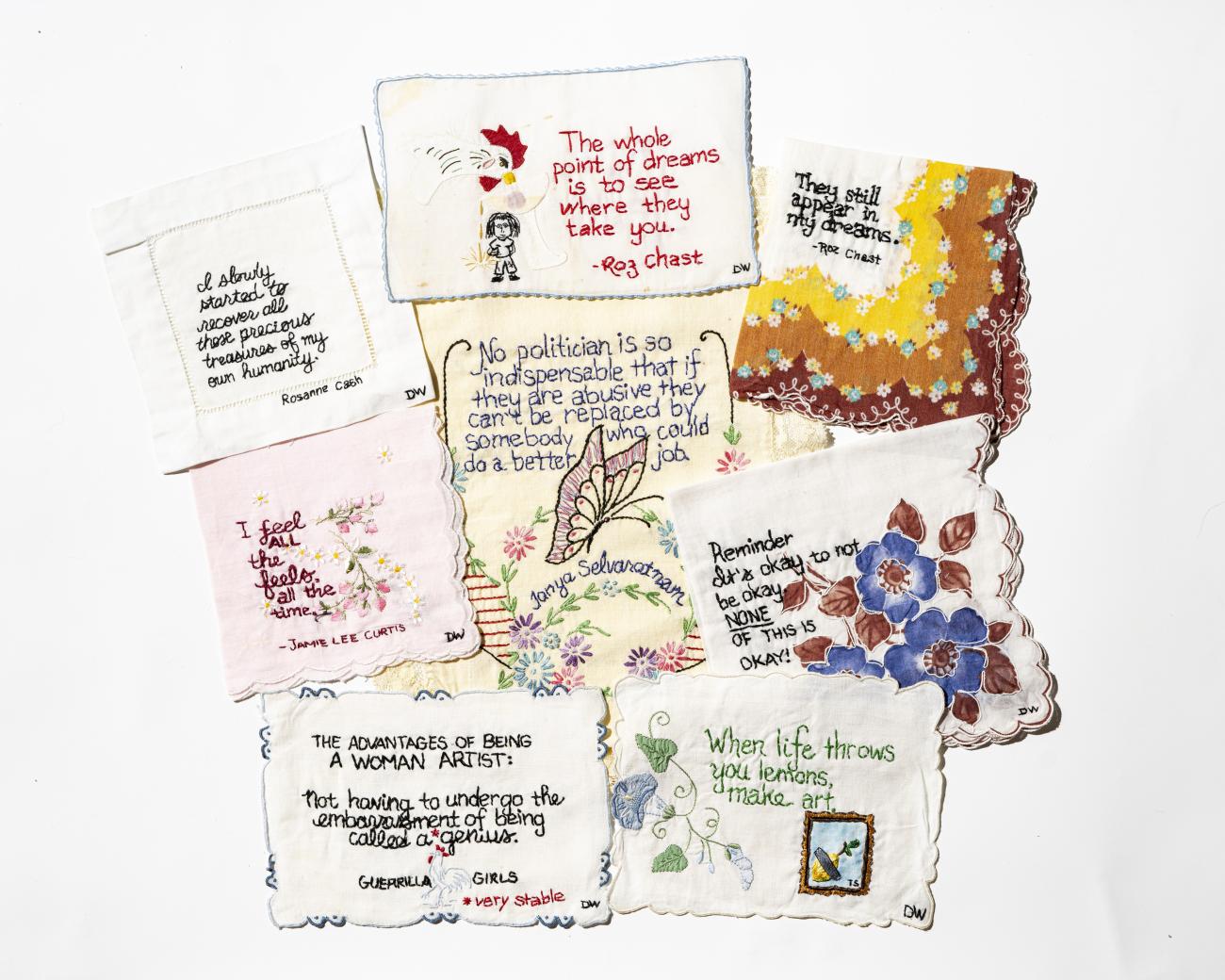
Photography by Nelson Hancock, images from Crafting A Better World: Inspiration and DIY Projects for Craftivists (HarperCollins) by Diana Weymar.
Wieland made the conscious choice to use textile works in her practice as a way to incorporate “women’s work” into what was a male-dominated art scene in New York at the time. As a textile artist, what aspects of Wieland’s textile practice resonate with you? Are there any textile works in Heart On that particularly speak to you?
All of Wieland’s works resonate with me in so many ways, but I love her quilts. The quilts are examples of how she took her work seriously, but not herself. She put everything she had into her art, but she didn’t forget to have fun. She elevated others and understood that craft is about people and makers. She also paid close attention to language and political discourse. Importantly, she understood displacement. If you take a material out of one context and use it in another, you create space for meaning and purpose. Why not stitch tweets? Why not make hard issues into soft art? She seemed to offer up the unexpected – can art keep us warm?
Reflecting on Tiny Pricks Project alongside Wieland’s works, why do you think textile art is an impactful medium for exploring, discussing, and critiquing political landscapes?
I think politics have become toxic. You can choose to pay attention or look away, but sooner or later, it becomes hard to go about daily life without feeling discouraged on some level. I think textile art is comforting, and it offers a kind of humility that brings us to a place of mutual respect. Textiles are familiar to all of us; we have this in common. It’s a gentle way to explore challenging issues.
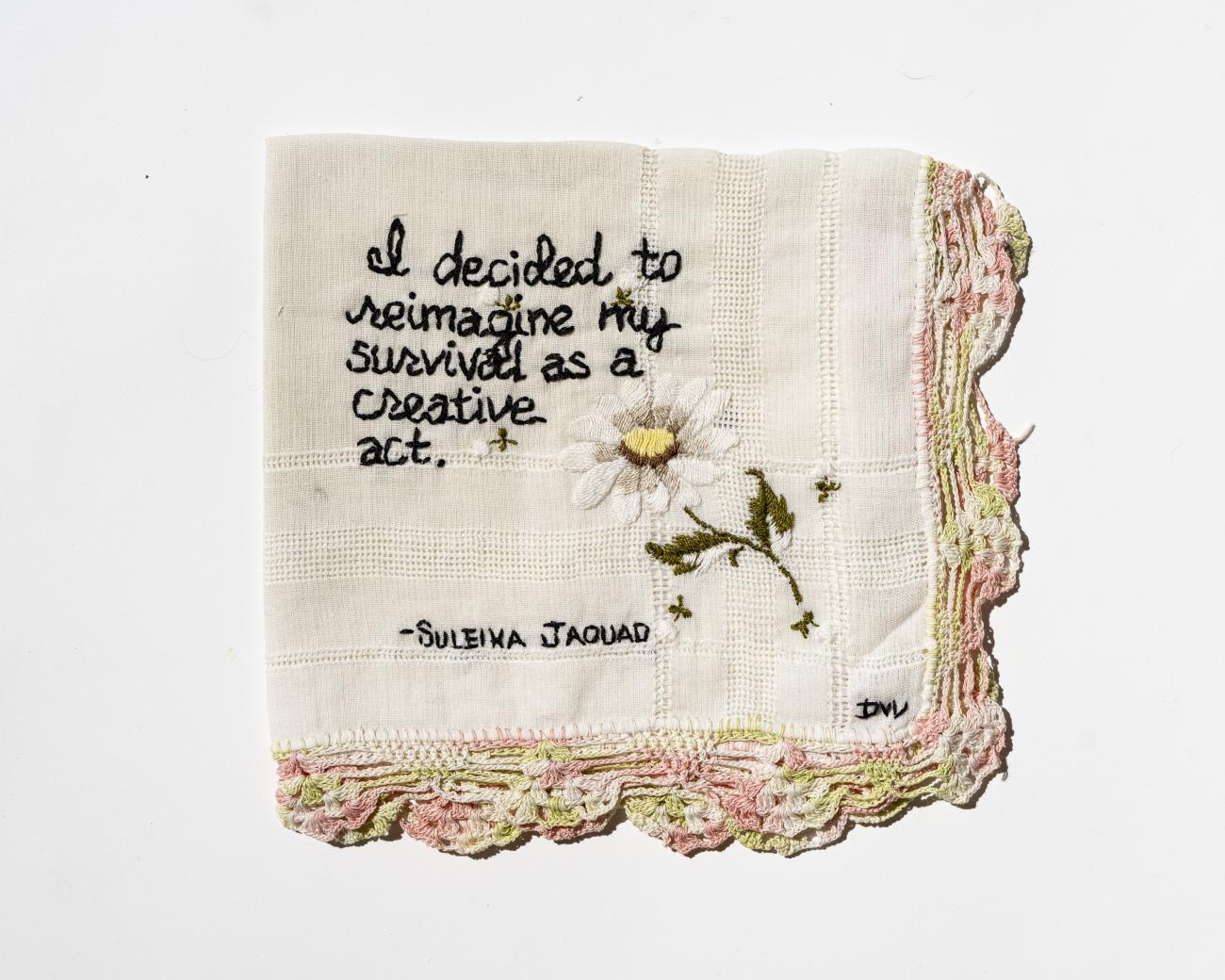
Photography by Nelson Hancock, images from Crafting A Better World: Inspiration and DIY Projects for Craftivists (HarperCollins) by Diana Weymar.
On November 22, you’ll be discussing Wieland’s practice alongside Heart On curators Georgiana Uhlyarik from the AGO and Anne Grace from the MFA. What topics do you hope to explore during this modern stitching circle?
I am so excited to talk with both Anne and Georgiana about Wieland’s work and the common threads they see between my work and the work of other political artists. We’re also inviting people to bring their own craft projects to the talk, so that they can make while we talk about making. I am curious about how we hold our attention, and in this case, we hope people will literally be holding something in their hands!
This is a dynamic time in terms of the US/Canada relationship. I think Wieland was interested in exploring this topic. I wish she were here today to share her thoughts! I have so many questions for her. Anne and Georgiana are the closest I can come to asking Wieland. In short, it’s an honor/honour to be asked to be part of the exhibition in this special way.
Bring your current projects and learn more about how Wieland and Weymar respond to political landscapes through textile art by attending Common Threads, A Modern Stitching Circle. Grab your tickets here.
After the talk, make your way up to experience Wieland’s textile works as part of Joyce Wieland: Heart On, on view on Level 5 of the AGO. Heart On is curated by Georgiana Uhlyarik, Fredrik S. Eaton Curator of Canadian Art at the AGO and Anne Grace, Curator of Modern Art at the MMFA. It is co-organized by the AGO and MMFA. Learn more about Wieland’s life and art by purchasing the exhibition catalogue at the AGO Shop online and in store.

